All about Flax |
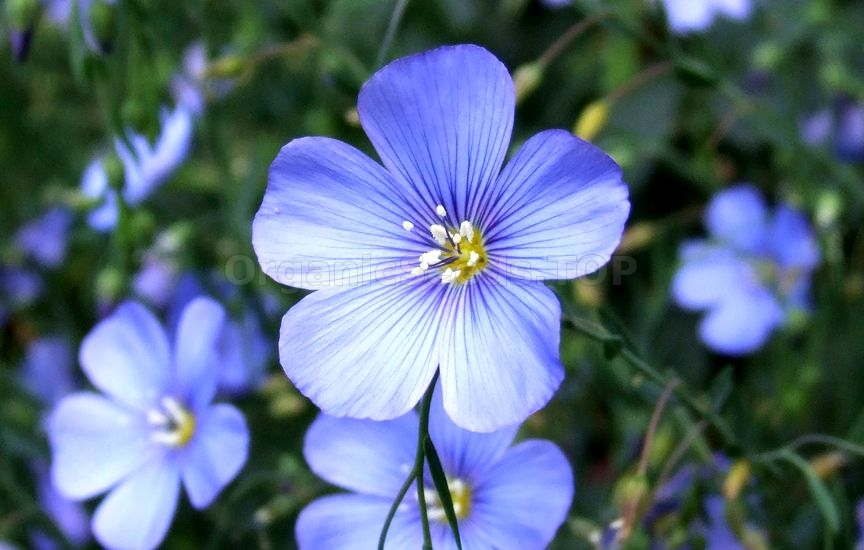 Flax is an annual plant that grows to a height of 40 to 91 cm (16 to 36 in.), depending on variety, plant density, soil fertility, temperature and available moisture. Flax is highly self-pollinating, with outcrossing rates from 0.3 to 2.0% under normal circumstances. Insects are the primary agents of outcrossing. The life cycle of the flax plant consists of a 45- to 60-day vegetative period; a 15- to 25-day flowering period; and a maturation period of 30 to 40 days. Although there is a period of intense flowering, a small number of flowers may continue to appear right up to maturity. Maturity is delayed under cool, wet conditions. The crop lifecycle from seeding to maturity is typically 90 to 125 days, depending on overall environmental conditions. Drought, high temperature and disease can shorten the growth period and crop lifecycle. If ripening occurs under high soil moisture and fertility conditions, stems may remain green and new growth may result in a second period of intense flowering. Some Canadian flax varieties are more determinate and resist reflowering. Maturity will be delayed under cooler than normal growing conditions, at higher altitudes characterized by lower heat units (i.e. western Alberta and Peace River region), or in the northern prairies. Under these conditions, the lifecycle may be extended to over 125 days. Growth Stages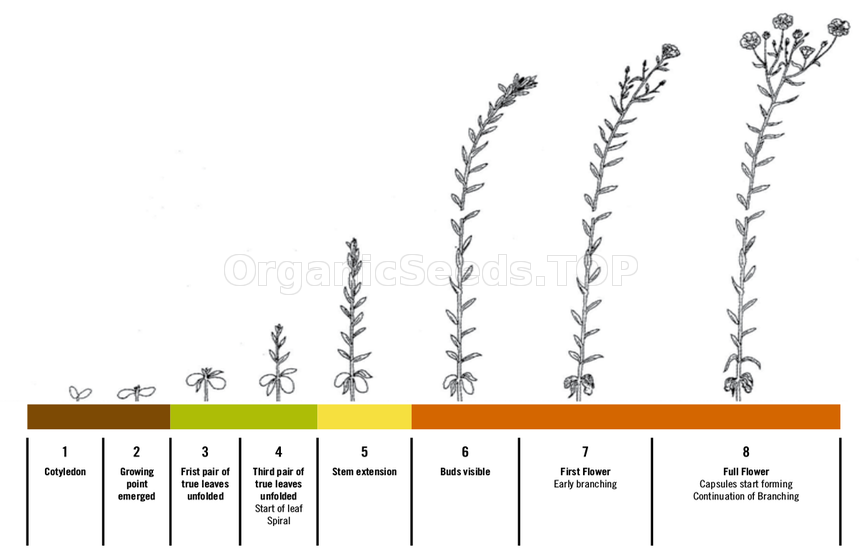 There are 12 distinct growth stages (GS) in the development of a flax plant (see Fig. 4-1). In the illustration below, these GS’s are shown as numbered line drawings. Each illustration has a title description and, in some cases, additional identifying information. These growth stages also correspond to the growth stages referred to in the Diagnostic Guide. After germination, the cotyledons (two small seed leaves) emerge in stage 1 and the young seedling proceeds to first true leaf formation in stage 2. After this, a second pair of leaves (stage 3) are unfolded, then the third pair of true leaves (stage 4), and so on to more leaves and stem extension (stage 5 and Photo 4-1). The flax plant has one main stem, but two or more branches (tillers) may develop from the base of the plant when plant density is low and/or high soil nitrogen levels. Basal branching is also prominent if the main stem of a young seedling is damaged (loss of apical dominance). Canadian flax varieties vary with regards to basal branching, from limited to extensive. The main stem continues to extend and buds form at the top of the plant (stage 6 and photo 4-2). In stage 7, early branching of the main stem becomes obvious towards the top of the plant, at about 30 cm up (12 in.). Around this time, the first flower will begin to open. The main stem and branches give rise to a multi-branched, irregular arrangement of flowers. The plant has a short, branched taproot which may extend to a depth of more than 1 m (39 in.) with side branches stretching approximately 30 cm (12 in.). Compared with other major crops of the prairies, flax has a relatively limited root system (shallow with limited root volume). Flowering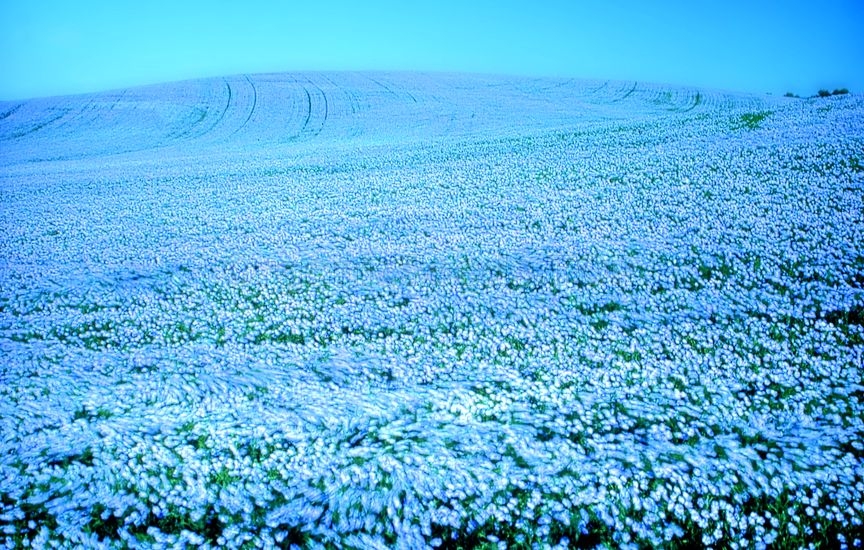 New flax flowers open early each morning and petals are usually shed by mid-day. The flower parts (petals, sepals and anthers) all occur in units of five (Fig. 4-2). Flax varieties may be distinguished by the colour of their flower parts; which can range from a dark to a very light blue, white or pale pink. The flower bud just prior to opening is about 14 mm (0.5 in.) long and flowers on opening contain nectar that attracts insects. Insect pollination is not necessary for seed production as flax is highly self-pollinated. The anthers are a shade of blue or are yellow. The style and filaments (bear the anthers) are blue or colourless. Flowering typically lasts from 15 to 25 days, although under wet and fertile conditions, a small amount of flowering may continue on late formed branches throughout the season. After pollination, the petals fall and the base of the flower, the ovary, starts to swell. The ovary is the seed house, known as a boll or capsule, which contains the developing seeds (stages 8 and 9). In cases where crop growth is delayed, or low plant densities, or when there is damage to the apical dominance of the main stem; the plant will also produce more secondary branching. This results in a lengthening of the flowering period, a greater range in boll development and a delay in maturity. Ripening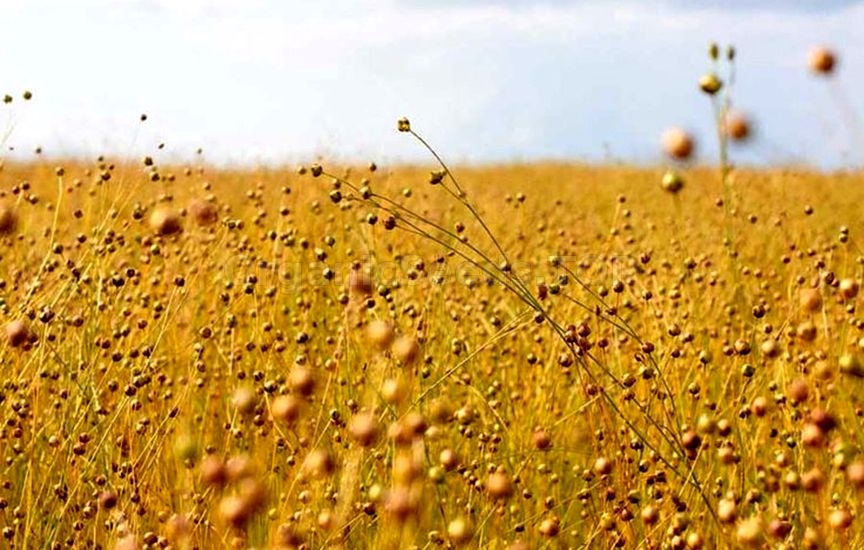 The mature fruit of the flax plant is the dry boll or capsule. Ripening of the boll begins 20 to 25 days after flowering. The boll has five segments which are divided by a wall (septum) (Fig. 4-3). Each segment produces two seeds separated by a low partition called a “false septum”, whose margin may be hairy or smooth, depending on the variety. With complete seed set, the boll contains ten seeds, though an average of six to eight seeds per boll is usual. Seed development is staged as green bolls containing white immature seeds (stage 10) proceed to a brown boll containing seeds having a light brown coloured seed coat with plump pliable seed contents. When ripe, the bolls of Canadian varieties are slightly gaping (Fig. 4-4), that is, the boll opens at the apex (tip of the boll) and the five segments separate slightly along the margin. The bolls rarely open so far as to allow the seeds to fall out, as dehiscence is a wild trait that was selected against. Usually the boll will open slightly under conditions of low relative humidity and close up when relative humidity is high. This characteristic allows the flax plant to resist seed weathering as excess moisture is liberated from within the boll. At physiological maturity, ripe seeds will rattle within the boll or capsule. Stage 12 is when a majority (90 to 95%) of bolls contain seeds that rattle. Dry down after the crop has reached physiological maturity (75% brown boll stage) can be hastened with crop desiccants, drought or disease. However, premature ripening often results in the production of small, thin, immature seed. Seeds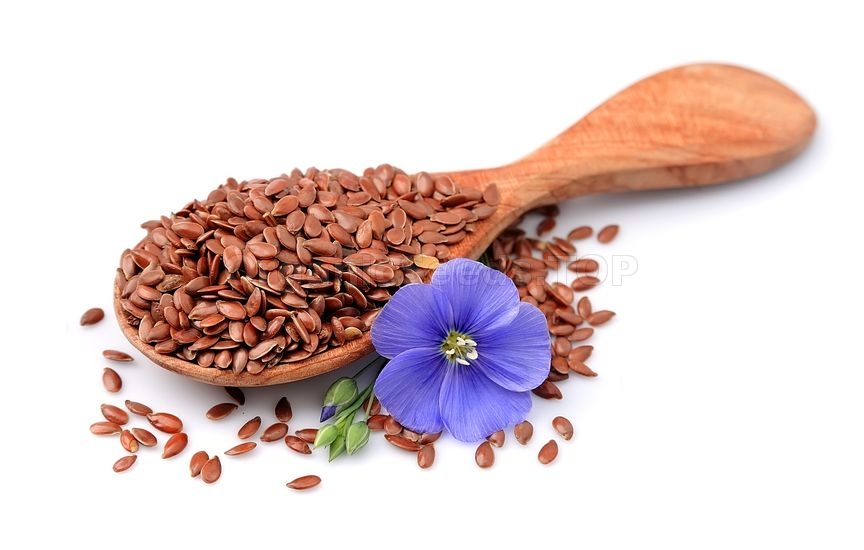 Flax seeds are flat, oval and are pointed at one end. A thousand seeds weigh from about 5 to 7 g (less than 1 oz.), depending on variety and growing conditions. Canadian flax varieties range in colour from light brown to dark reddish brown or yellow. Mottled seed, a combination of yellow and brown on the same seed, may be the result of environmental conditions. The seed is covered with a coating (mucilage) that gives it a high shine and causes the seed to become sticky when wet. At times, this mucilage absorbs moisture from the air, causing the mature seeds to stick to the boll surface. This removes the shine on the seeds, giving them a scabby appearance which may result in a reduced grade. You may need:«Blue Eyes» - Organic Flax Seeds«White Vent» - Organic Panic Grass Seeds«Sprouting Seeds» - Organic Alfalfa Seeds«Hemp Hearts» - Organic Cannabis Seeds |
|
|
